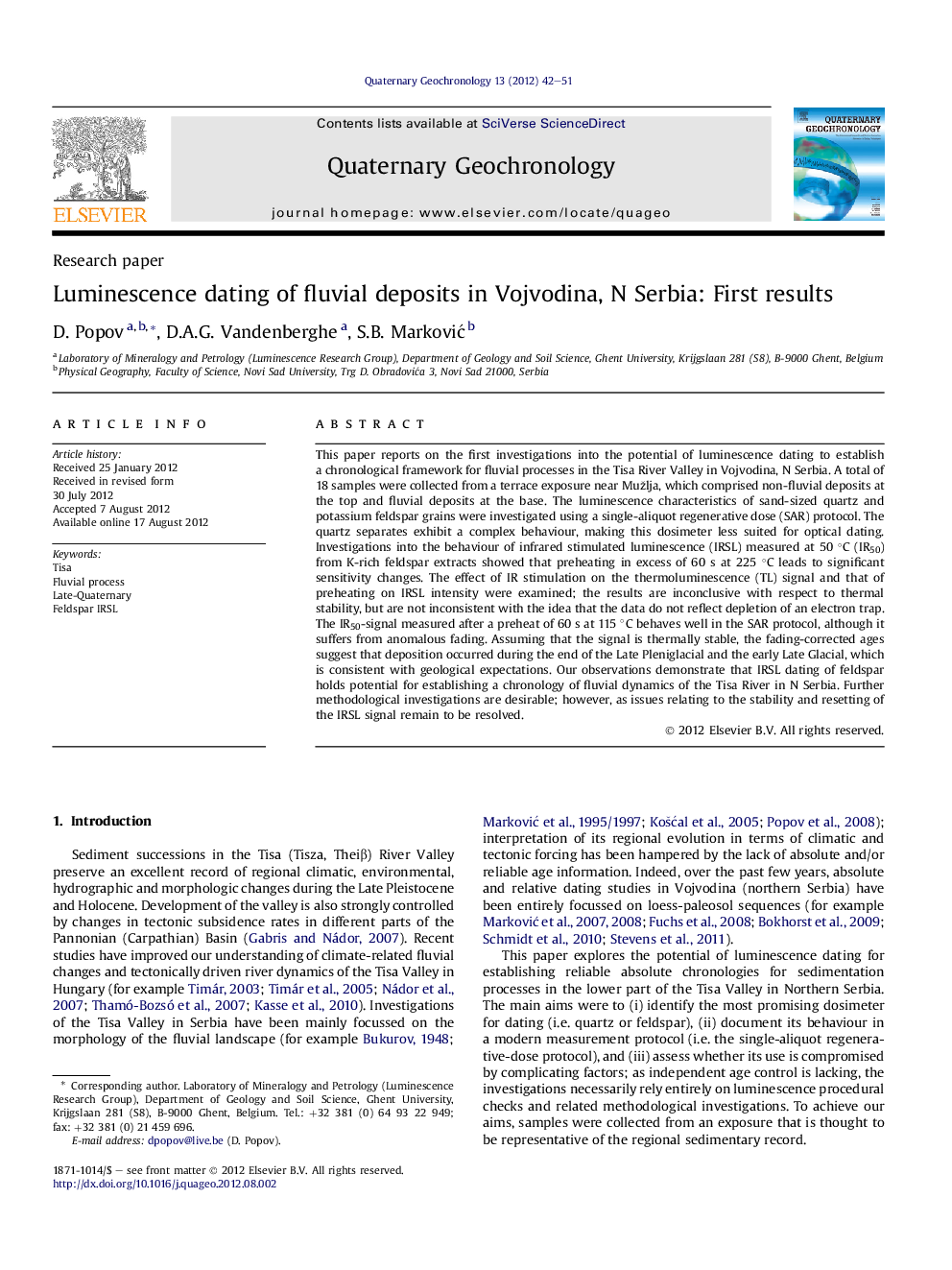| Article ID | Journal | Published Year | Pages | File Type |
|---|---|---|---|---|
| 4725018 | Quaternary Geochronology | 2012 | 10 Pages |
This paper reports on the first investigations into the potential of luminescence dating to establish a chronological framework for fluvial processes in the Tisa River Valley in Vojvodina, N Serbia. A total of 18 samples were collected from a terrace exposure near Mužlja, which comprised non-fluvial deposits at the top and fluvial deposits at the base. The luminescence characteristics of sand-sized quartz and potassium feldspar grains were investigated using a single-aliquot regenerative dose (SAR) protocol. The quartz separates exhibit a complex behaviour, making this dosimeter less suited for optical dating. Investigations into the behaviour of infrared stimulated luminescence (IRSL) measured at 50 °C (IR50) from K-rich feldspar extracts showed that preheating in excess of 60 s at 225 °C leads to significant sensitivity changes. The effect of IR stimulation on the thermoluminescence (TL) signal and that of preheating on IRSL intensity were examined; the results are inconclusive with respect to thermal stability, but are not inconsistent with the idea that the data do not reflect depletion of an electron trap. The IR50-signal measured after a preheat of 60 s at 115 °C behaves well in the SAR protocol, although it suffers from anomalous fading. Assuming that the signal is thermally stable, the fading-corrected ages suggest that deposition occurred during the end of the Late Pleniglacial and the early Late Glacial, which is consistent with geological expectations. Our observations demonstrate that IRSL dating of feldspar holds potential for establishing a chronology of fluvial dynamics of the Tisa River in N Serbia. Further methodological investigations are desirable; however, as issues relating to the stability and resetting of the IRSL signal remain to be resolved.
► We investigate the potential of luminescence dating of fluvial sediments in Serbia. ► We examined two dosimeters using a SAR protocol for equivalent dose determination. ► The quartz separates exhibit a complex behaviour, making feldspar the mineral of choice. ► We demonstrate that IRSL dating of feldspar holds potential for establishing a chronology of fluvial dynamics in Serbia. ► Calculated fading-corrected ages are consistent with geological expectations.
